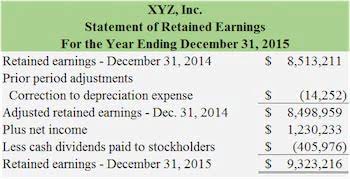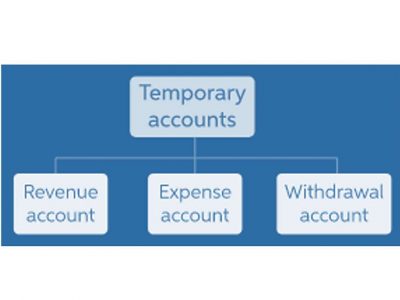Notes Payable Journal Entry: Example and How to Record

Again, the interest component will be less because a payment is paid immediately upon execution of the note, which causes the principal amount to be reduced sooner than a payment made at the end of each year. Notes payable are initially recognized at the fair value on the date that the note is legally executed (usually upon signing). Subsequent valuation is measured at amortized cost using the effective interest rate. The principal of $10,475 due at the end of year 4—within one year—is current.
Time Value of Money
- These notes are negotiable instruments in the same way as cheques and bank drafts.
- At the end of note maturity, we need to make the payment to the holder of the note in order to honor the promissory note that we have issued.
- They are usually issued for buying property, plant, costly equipment and/or obtaining long-term loans from banks or other financial institutions.
- We just need to record the face value of the interest-bearing note payable in the journal entry at the time of issuing the promissory note to recognize our liability on the balance sheet.
Unless the interest is paid up to date, the company will always owe some interest to the lender. An interest-bearing note payable may also be issued on account rather than for cash. In this case, a company already owed for a product or service it previously was invoiced for on account. Rather than paying the https://www.bookstime.com/articles/double-declining-balance-method account off on the due date, the company requests an extension and converts the accounts payable to a note payable. A note payable is a loan contract that specifies the principal (amount of the loan), the interest rate stated as an annual percentage, and the terms stated in number of days, months, or years.
Notes payable vs. accounts payable: What’s the difference?
For example, if the borrower needs more money than originally intended, they can issue multiple notes payable. F. Giant must pay the entire principal and, in the first case, the accrued interest. The discount simply represents the total potential interest expense to be incurred if the note remains’ unpaid for the full 120 days. note payable journal entry National Company must record the following journal entry at the time of obtaining loan and issuing note on November 1, 2018. For example, on October 1, 2020, the company ABC Ltd. signs a $100,000, 10%, 6-month note that matures on March 31, 2021, to borrow the $100,000 money from the bank to meet its short-term financing needs.
- Accounts payable is the amount a business owes its vendors for goods or services purchased on credit.
- Unearned Revenues is a liability account that reports the amounts received by a company but have not yet been earned by the company.
- The company obtains a loan of $100,000 against a note with a face value of $102,250.
- He has worked as an accountant and consultant for more than 25 years and has built financial models for all types of industries.
- Some key characteristics of this written promise to pay (see Figure 12.12) include an established date for repayment, a specific payable amount, interest terms, and the possibility of debt resale to another party.
- The long term-notes payable are very similar to bonds payable because their principle amount is due on maturity but the interest thereon is usually paid during the life of the note.
How do I account for interest expense if I need to pay it annually?

Some key characteristics of this written promise to pay (see (Figure)) include an established date for repayment, a specific payable amount, interest terms, and the possibility of debt resale to another party. A short-term note is classified as a current liability because it is wholly honored within a company’s operating period. This payable account would appear on the balance sheet under Current Liabilities. It is common knowledge that money borrowed from a bank will accrue interest that the borrower will pay to the bank, along with the principal. The present value of a note payable is equivalent to the amount of money deposited today, at a given rate of interest, which will result in the specified future amount that must be repaid upon maturity. The cash flow is discounted to a lesser sum that eliminates the interest component—hence the term discounted cash flows.
Part 2: Your Current Nest Egg
In scenario 3, there is an immediate reduction of principal because of the first payment of $1,000 made upon issuance of the note. The remaining four payments are made at the beginning of each year instead of at the end. This results in a faster reduction in the principal amount owing as compared with scenario 2. The following is an example of notes payable and the corresponding interest, and how each is recorded as a journal entry.
A journal entry example of notes payable

Utilizing tools like AP automation software or ERP software can reduce the workload of manual journal entries from accountants and surprise costs by accounting for expenses accurately as soon as they are made. A short-term notes payable created by a loan transpires when a business incurs debt with a lender (Figure). A business may choose this path when it does not have enough cash on hand to finance a capital expenditure immediately but does not need long-term financing.

Sometimes notes payable are issued for a fixed amount with interest already included in the amount. In this case the business will actually receive cash lower than the face value of the note payable. By contrast, accounts payable is a company’s accumulated owed payments to suppliers/vendors for products or services already received (i.e. an invoice was processed).
Which of these is most important for your financial advisor to have?
What Is Accrual Accounting, and How Does It Work? – Investopedia
What Is Accrual Accounting, and How Does It Work?.
Posted: Sat, 25 Mar 2017 00:07:13 GMT [source]
Amounts are routinely entered into this account when the company’s payroll records are processed. A review of the details confirms that this account’s balance of $1,200 is accurate as far as the payrolls that have been processed. When the company buys or purchases on credit, the liability will occur when goods or services are received. Hence the company will debit goods received or services expended and credit accounts payable as liabilities increase. In this case, goods can be inventory, fixed assets or office supplies, etc. and services can be consultant fee, maintenance, and advertising expense, etc. As previously discussed, the difference between a short-term note and a long-term note is the length of time to maturity.
The end-to-end AP process involves all steps in the accounts payable function, from receiving the invoice, reviewing it, approving it, accounting for it in the ledger, and finally, paying the bill to the vendor. After receiving the supplies, the firm realizes that $3,000 worth of supplies are not up to the quality standards. Since the vendor is not able to replace the products in time, the firm returns the products to the vendor and simultaneously decreases the accounts payable balance. A furniture company purchased raw materials from a manufacturer on credit on 22nd August 2023. The company received an invoice from the manufacturer after the delivery of raw materials on 24th August 2023.
